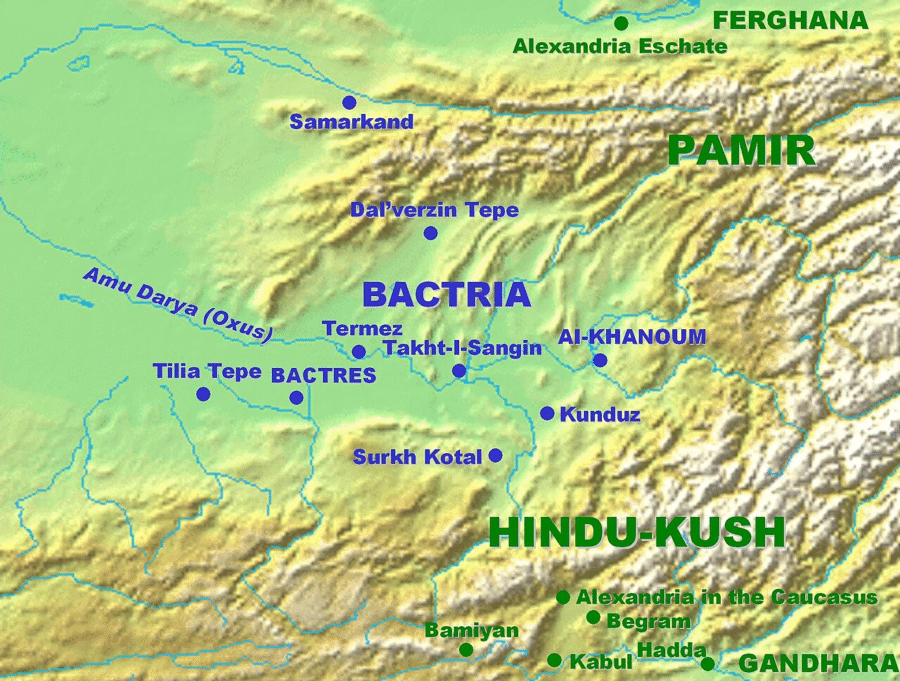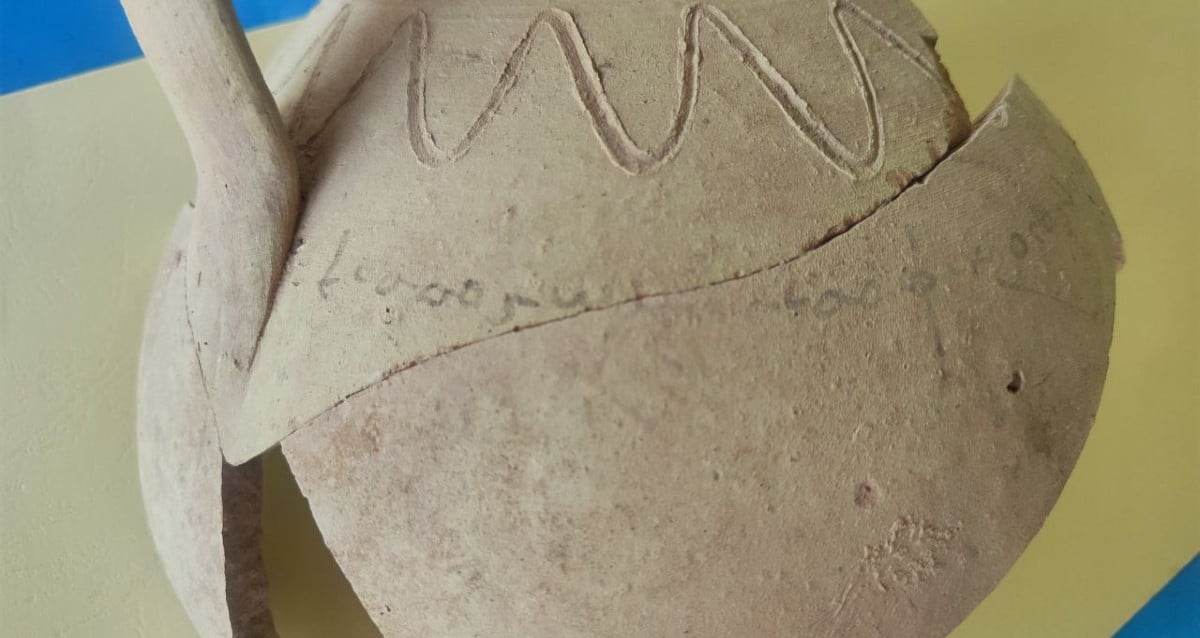Mysterious Ancient Water Jug Discovered in Tajikistan Reveals Hidden Secrets of Its Owner’s Identity
The statement continued: “Undoubtedly, this discovery opens a new chapter in the study of linguistics and history, offering fresh insights into the cultural and linguistic landscape of ancient Bactria.”
Indeed, this water jug is a window into life inside ancient Bactria, which was once part of the sprawling Kushan Empire.
The Rise And Fall Of Ancient Bactria
Bactria was an ancient civilization that once spanned the present-day countries of Afghanistan, Tajikistan, and Uzbekistan. It emerged during the Bronze Age, and benefited from the very fertile territory created by the Oxus River.

Wikimedia CommonsThe major cities in ancient Bactria.
“The soil of Bactria varies considerably in its nature,” the first-century Roman writer Quintus Curtius recorded. “In some spots extensive orchards and vineyards produce abundant fruit of a most delicious quality. The soil there is rich and well-watered. The warmer parts produce crops of corn, while the rest is better for pasture-land. The fertile portion is densely populated, and rears an incredible number of horses.”
Indeed, Bactria was such a rich region that it became the target for a succession of invaders, including Alexander the Great. The conqueror faced fierce resistance, but was able to win Bactria through a combination of both force and diplomacy before his death in 323 B.C.E.
Bactria then became part of the Seleucid Empire, and eventually gained relative independence as the Greco-Bactrian Kingdom. Eventually, it was absorbed into the Kushan Empire, which had first emerged around 30 C.E., and came to encompass huge swaths of present-day Afghanistan, Pakistan, India, Uzbekistan, and Tajikistan.














Post Comment